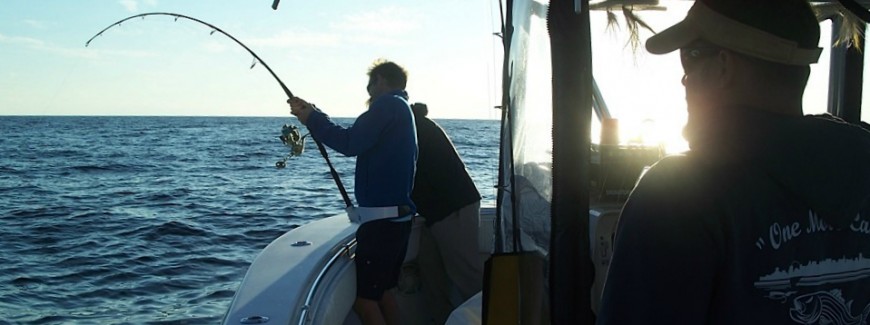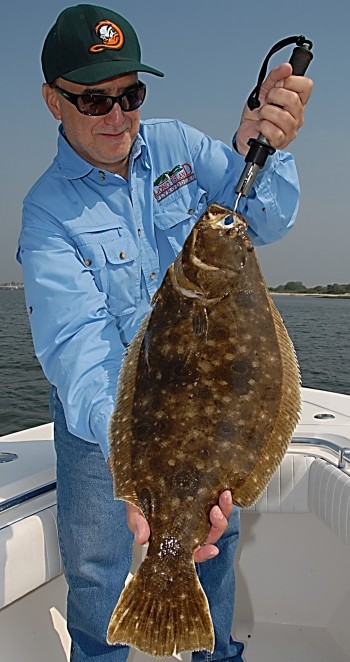Given the kind of thing that usually comes out of the RFA (Recreational Fishing Alliance) shop in Jersey, I wasn’t exactly surprised to see their latest press release. But yes, I was a little taken aback by the complete lack of context, not to mention the direct attacks on Council Members trying to do the right thing.
So… I think it’s important to explain what really went down at last week’s Mid Atlantic Fishery Management Council Meeting. Because to say that the RFA release: “VOTE TO TORPEDO RECREATIONAL FISHING COMMUNITY, COUNCIL & COMMISSION TURN DEAF EAR TO FLOUNDERING INDUSTRY” is misleading and omits important facts is an understatement.
For context on the summer flounder situation, I suggest reading my last blog: “And the Fluke Hits the Fan: With Summer Flounder, is it Really Time to Panic?”. But if you don’t have time to do that, the short version is that yes, after years of contentious debate and lots of pushback by industry (both recreational and commercial) we bit the bullet and rebuilt summer flounder to high levels that benefited a lot of people, including myself.
In the last couple of years, however, we’ve backslid some. According to the NE Fisheries Science Center, there’s been poor “recruitment” (read: poor spawning success) from 2010 to 2013, with 2014 being the first year approaching average since 2010. Consequently, now we’re seeing fewer fish in the Spawning Stock Biomass (SSB). So, if there are less fish around, you probably don’t want to fish on them at the same levels you were when there were a lot of fish around right? At least not if you want to maintain them at a “rebuilt” level.
Thus, the Summer Founder Monitoring Committee initially recommended what would have been a pretty drastic 43% cut in the 2016 quota, to get the summer flounder resource back on track. The Mid Atlantic Fishery Management Council leadership, recognizing the effect this might have on the fishing industry acted quickly to find a way to ease some of the economic repercussions of such a cut, recommending a 3-year phase in of the reduction. The Science and Statistical Committee (SSC) – a body of scientists who sets the upper catch limit – agreed that such a thing was doable while still conserving the stock, and so they recommended a 28.6% reduction in 2016, then another reduction of 2.5% in 2017 and another 1% in 2018.
Last week the Mid Atlantic Council met to discuss these recommendations. Before getting into what went down, let me make a few things clear. The Council is required by law to set an Annual Catch Limit (ACL) no higher than the Science and Statistical Committee (SSC)’s Acceptable Biological Catch (ABC) recommendation. That was a very deliberate inclusion in the last reauthorization of federal fisheries management law (Magnuson-Stevens Act). And it makes A LOT of sense. You want the upper limit of what the stock can handle set by scientists, not by fishermen/industry reps often with a direct financial interest in killing more fish. Otherwise you have what is a perceived, and often a very real fox-watching-the-hen-house situation. What this stipulation also does is it gives Council Members cover to make those tough, but wise decisions that benefit all of us in the long term, by putting the onus on the SSC. Believe me, this is important given the pressure Council Members are often under. Without this stipulation in place, it is difficult to impossible to rebuild and maintain stocks at levels abundant enough for anglers to actually benefit.
Getting back on point, the Science and Statistical Committee (SSC) sets its Acceptable Biological Catch (ABC) by taking all the available information and developing an Over Fishing Limit (OFL), then reducing it to a certain extent based on the confidence they have in the science. If they believe the science we have on X species is good, the buffer between Acceptable Biological Catch (ABC) and the Over Fishing Limit (OFL) will be small. If they have little confidence in the science, it’ll be higher. In the case of summer flounder, the science is actually pretty good. So we only have an 8% buffer between Acceptable Biological Catch (ABC) and the Over Fishing Limit (OFL). In other words ABC is at 92% of the OFL.
Still following me? Good. Let’s get on to what actually happened at the Council meeting and of course RFA’s warped interpretation.
At the meeting we were presented with the Science and Statistical Committee (SSC) recommendation. About the only thing the RFA press release got right is that a commercial fishing industry representative from New Jersey, did indeed make a motion to remand the summer the flounder ABC recommendation, with the intent that the SSC consider setting the Acceptable Biological Catch (ABC) right at the Over Fishing Limit (OFL). In other words get rid of the 8% uncertainly buffer I described above, which would create an approximate 20% reduction, instead of the 28.6% reduction that comes with the Science and Statistical Committee’s recommendation.
Here’s the problem with that. Not only is it a really bad idea, we simply CAN’T do it. The Council developed a remand policy years ago. It basically states that we can only remand when there’s an error in calculation, an error in fact or omission, or a failure to follow the Committee’s terms of reference. None of that happened here. And the SSC went on record at the Council meeting saying it has no justification to set the ABC at OFL. I mean, doing such a thing would be tantamount to saying the science is perfect, and there’s no uncertainty at all. I think we can all agree that this isn’t the case here.
So the motion RFA expected us all to vote for was null and void from the beginning. Even if it passed, the SSC was clear they would not set ABC at OFL. That’s a pretty important detail that the RFA release fails to mention.
And for argument’s sake, let’s say the SSC actually did set ABC at OFL. Given all the uncertainly in management, and the historical propensity to go over the catch targets, in all likelihood we’d be going over the Over Fishing Limit (OFL) pretty quickly. IF that were to happen, paybacks would kick in and the reductions the following year would be way, way worse than the 28.6% reduction we’re looking at now.
I mean come on man. Anyone with an ounce of foresight could see that. One of the reasons that buffer is so important is that most of the time keeps us from going over the Over Fishing Limit (OFL).
So yeah, that motion just didn’t make sense in any respect. It certainly wasn’t a “solid compromise” like the release makes it out to be. And THAT is why it failed by a wide margin. To even imply that it was because the Council turned a blind eye to industry is either dishonest or a complete failure to understand how things work. Council leadership heard the concerns here and tried very hard to mitigate the impacts with the proposed 3-year phase in of reductions.
Now that this is out of the way, let me talk about the ad hominem attacks in the release. It’s become a staple really of how RFA operates. If you disagree with any of their kill-more positions, they try and paint you as a dreaded “environmentalist”.
In this case, there’s mention of my position as Grants Administrator at the Norcross Wildlife Foundation, and well, no mention of the fact that I’ve run a relatively successful charter fishing business for the last 15 years and been a regular contributor to just about every fishing magazine out there. Pretty clear what the press release is trying to insinuate. That I somehow am not a real fisherman and that I don’t’ have a real fishing business, and that I’m just a dreaded enviro.
I dunno man. The 100-plus days I spend on the water working 16-hour days to pay the bills might suggest otherwise. Organizations like RFA, who believe they have a right to kill every fish they catch, and that NOAA has no business constraining or managing fisheries, are what make charter fishing businesses like mine so darn hard to keep afloat these days. I want you to think about striped bass when I say that. Guys like us NEED healthy abundant stocks to put people on fish.
In regards to Norcross, absolutely I’ve been the Director of Grant Programs here for 14 years. It’s work I am very proud of. During such time I’ve helped the Foundation make grants to organizations like the Coastal Conservation Association, Jersey Coast Anglers Association, Trout Unlimited, Hudson River Fisherman’s Association, Fish America Foundation, Atlantic Salmon Federation, just about all of the Water/River/Sound Keepers, Clean Ocean Action, American Fisheries Society … I could go on and on here. Pretty much all of those grants went to equipment for on the ground fisheries conservation and habitat protection. Norcross does no fisheries or other advocacy work! It’s irritating that RFA keeps trying to drag Norcross into it. Norcross has been a supporter of the conservation-minded sportfishing community for decades!
The point is, it’s all tied together. To somehow insinuate that I’m not a “real” fisherman and that I don’t have any real skin in this game, and that I don’t represent the recreational fishing community (at least the part that doesn’t want to kill every damn thing in the water) is dead wrong, pure and simple.
That’s why I think it’s important that we manage an important resource like summer flounder with caution. We need to insure that there are enough fish in the water to support the entire recreational fishery, not just the part of it that wants to kill more and smaller fish. That means the kind of availability we saw a few short years ago. Where keepers could be readily found in the bays and in the ocean. Not just by a handful of people prosecuting a fishery in 60′ of water.
Given the documented poor recruitment and what I and many other Captains and fishermen are seeing on the water I believe the 28.6% reduction we’re facing in 2016 absolutely makes sense. You just don’t beat on a stock at the same level when it’s experiencing a downturn as you did when it’s abundant. I mean, this is exactly the way fishery management is supposed to work. Stocks go up and down, regulations change as a result. This is not the last reduction we’ll see and I expect we’ll see some increases. As I mentioned in my last blog, yes some consistency would be nice, but nothing is consistent in nature. If you can’t handle that simple truth then yeah, maybe you shouldn’t be in this business.
This is a public resource and needs to be managed with the public in mind, not just the special interests behind the RFA’s release. I’d really hate to go back to the days where everyone was killing 14″ fluke and 20″ fish were very, very hard to come by. But I’m pretty darn sure that the organization behind this press release wants to do just that.
Those of us who care about the long-term viability of marine resources need to make sure they aren’t successful.



